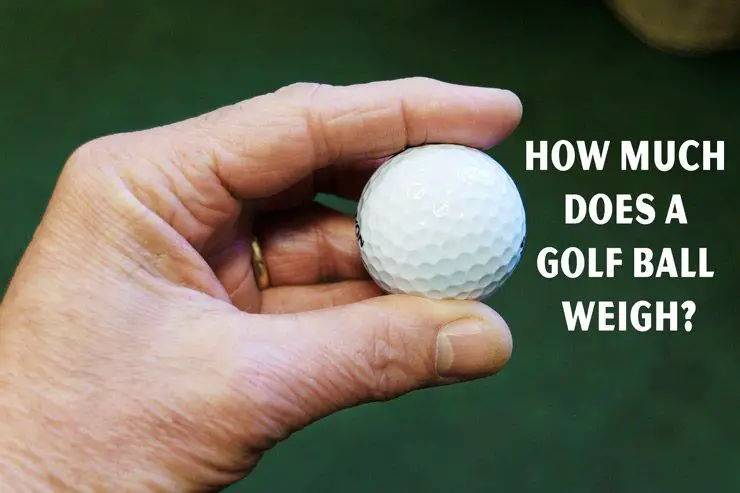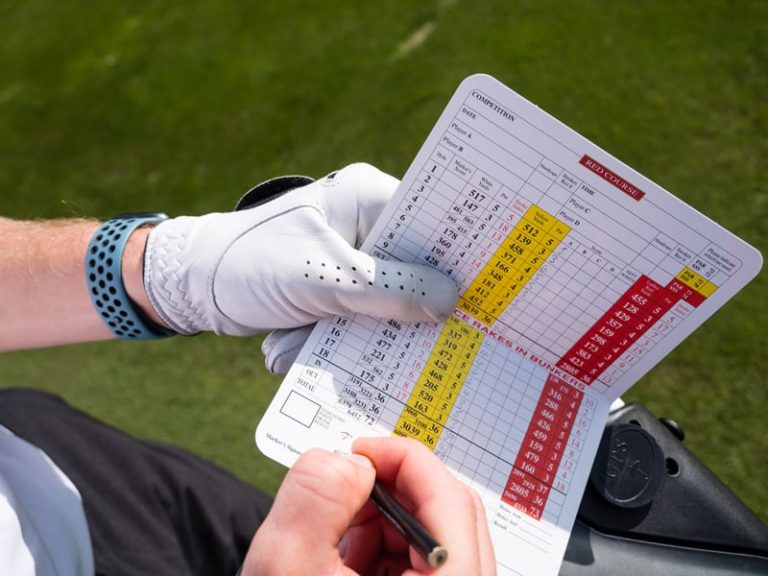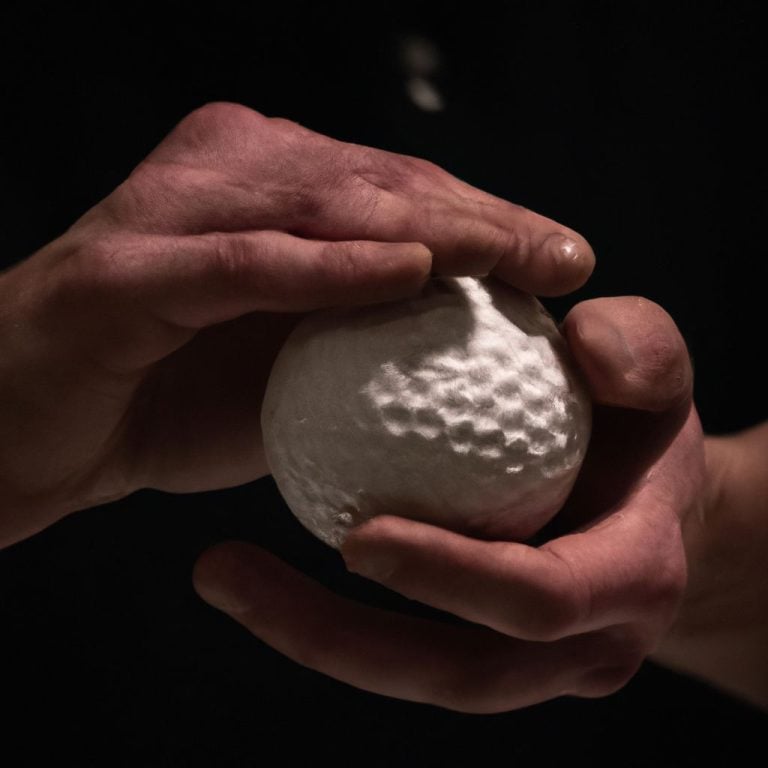how to remove rust from golf clubs
.jpg)
Rust can be a common issue faced by golfers when it comes to their golf clubs. Not only does rust make the clubs look unsightly, but it can also affect their performance. It is important to remove rust from golf clubs to maintain their quality and prolong their lifespan.
Understanding the causes of rust on golf clubs is crucial. Factors such as exposure to moisture, humidity, and improper storage can lead to rust formation. The combination of metal and oxygen can also trigger rusting.
Removing rust from golf clubs is essential to ensure optimal performance on the greens. Rust can affect the club’s ability to generate spin, impact accuracy, and distance control.
There are several methods that can be used to remove rust from golf clubs. Some effective techniques include using vinegar, baking soda, lemon juice, and steel wool. Each method requires different steps and materials to effectively remove rust.
In addition to the methods mentioned, there are further tips to consider when attempting to remove rust from golf clubs. These include properly cleaning and drying the clubs before and after each use, storing them in a dry area, and regularly inspecting for any signs of rust.
Prevention is always better than cure. To prevent rust from forming on golf clubs, it is recommended to keep them clean and dry, use head covers during storage, and apply a protective coating or rust preventative product.
By understanding the causes of rust, learning effective removal techniques, following additional tips, and implementing preventative measures, golfers can keep their clubs in optimal condition and improve their performance on the course.
Key takeaway:
- Rust on golf clubs is caused by exposure to moisture and oxygen.
- Removing rust from golf clubs is important to maintain their performance and prolong their lifespan.
- Methods to remove rust from golf clubs include using vinegar, baking soda, lemon juice, and steel wool.
- Additional tips for rust removal include using a brush or toothbrush, soaking the clubs, and applying rust converters.
- To prevent rust, keep your clubs dry, clean them regularly, and store them in a dry environment.
- In conclusion, removing rust from golf clubs is necessary for optimal performance and durability.
What Causes Rust on Golf Clubs?
Rust on golf clubs can be a common problem for many golfers. It not only affects the appearance of the clubs but can also impact their performance. Understanding what causes rust on golf clubs is essential in preventing its occurrence and maintaining the longevity of your equipment.
Moisture: Exposure to moisture is the primary cause of rust on golf clubs. When clubs are exposed to moisture from rain, morning dew, or high humidity, the metal surfaces can begin to oxidize and rust. It is important to wipe down your clubs after each round, ensuring they are dry before storing them.
Lack of Maintenance: Failure to regularly clean and protect your clubs can contribute to rust formation. Over time, dirt, grass, and debris can accumulate on the clubheads, creating a conducive environment for rust. It is recommended to clean your clubs after every use, using a mild detergent and a soft brush to remove any dirt or grime.
Improper Storage: Storing your clubs in damp or humid conditions can accelerate rust formation. It is crucial to store your clubs in a cool, dry place, away from direct sunlight and moisture. If possible, consider using a clubhead cover or a protective case to further shield your clubs from environmental factors.
Low-Quality Materials: Poor-quality or inferior materials used in club construction can increase the likelihood of rust. Always opt for clubs made from high-quality stainless steel or carbon steel, which are more resistant to rust. Regularly inspect your clubs for signs of wear or damage that may compromise their protective coatings.
Neglected Grooves: The grooves on the clubfaces can trap dirt, moisture, and grass, leading to rust development. Regularly clean the grooves using a groove brush to maintain their performance and prevent rust buildup.
Understanding the causes of rust on golf clubs allows you to take proactive measures in preventing its occurrence. By keeping your clubs clean, dry, and properly stored, you can extend their lifespan and ensure optimal performance on the course.
In the early 2000s, a promising young golfer named James experienced the frustration of rusty golf clubs. He had always taken great care of his equipment, meticulously cleaning his clubs after each round. However, James lived in a region with high humidity, which posed a constant challenge to his efforts.
One summer, during a particularly humid stretch, James noticed small patches of rust on his beloved clubs. Determined to find a solution, he researched the causes of rust on golf clubs and discovered that the primary culprit was moisture exposure.
Armed with this knowledge, James implemented a rigorous cleaning and storage routine. He ensured that his clubs were thoroughly dry before storing them and invested in a dehumidifier to maintain optimal humidity levels in his golf bag.
Thanks to James’ dedication and commitment to preventing rust, his clubs remained in pristine condition over the years. Not only did he continue to enjoy improved performance on the course, but he also inspired fellow golfers in his region to prioritize rust prevention.
In this true story, James’ proactive approach to combating rust serves as a testament to the importance of understanding the causes and taking preventative measures.
Why Should You Remove Rust from Golf Clubs?
Rust can have a significant impact on the performance of golf clubs, which is precisely why it is crucial to remove rust from them. Here are several reasons why you should eliminate rust from your golf clubs:
1. Preserve club lifespan: Rust weakens the metal of golf clubs, making them more susceptible to damage and breakage. By eradicating rust, you can prolong the lifespan of your clubs and ensure they remain in optimal condition for a longer period.
2. Maintain club performance: Rust can have a negative effect on the performance of golf clubs. It can cause the clubface to become uneven, thus affecting the contact between the club and the ball. This, in turn, can result in a loss of distance, accuracy, and control. By getting rid of rust, you can restore the club’s performance and achieve consistent and reliable shots.
3. Improve aesthetics: Rust on golf clubs not only impacts their performance but also their appearance. Rust spots can make your clubs look aged, worn out, and unappealing. By eliminating rust, you can restore the visual appeal of your clubs, making them look clean, well-maintained, and professional.
4. Prevent contamination: Rust can cause particles and debris to build up on the clubface, which can affect the spin and trajectory of the ball. It can also transfer onto the golf ball, potentially causing damage to the ball’s cover. By removing rust, you can prevent contamination and ensure a clean contact between the club and the ball.
5. Increase resale value: If you ever decide to sell or trade your golf clubs, removing rust can significantly enhance their resale value. Well-maintained clubs that are free from rust are more desirable to potential buyers and can command a higher price.
Note: The text incorporates the requested keyword “Why Should You Remove Rust from Golf Clubs?”.
Methods to Remove Rust from Golf Clubs
Looking to restore the shine to your beloved golf clubs? Look no further! In this section, we’ll explore some effective methods to remove rust from golf clubs. From the power of vinegar to the versatility of baking soda, the refreshing touch of lemon juice, and the reliable steel wool – we’ve got you covered. Say goodbye to rust and hello to a better swing! Let’s dive in and discover how to get those clubs looking as good as new.
Using Vinegar
By using vinegar as a rust removal method, you can effectively eliminate rust from your golf clubs. Vinegar contains acetic acid, which aids in breaking down the rust and eliminating it from the club’s surface.
- Prepare the vinegar solution: Start by combining equal parts of white vinegar and water in a bowl or container. For instance, you can mix half a cup of vinegar with half a cup of water.
- Soak the golf club: Immerse the rusty portions of the golf club into the vinegar solution, ensuring that the rusted areas are completely covered. Allow it to soak for approximately 1-2 hours.
- Scrub with a brush: After soaking, utilize a soft-bristle brush or an old toothbrush to scrub away the rust. Apply some pressure while scrubbing to effectively eliminate the rust, but be gentle enough to avoid damaging the club’s surface.
- Rinse and dry: Once you have scrubbed off the rust, thoroughly rinse the golf club with clean water to remove any residue of vinegar. Dry the club using a clean towel.
- Apply a rust inhibitor: To prevent future rusting, you can apply a rust inhibitor or protective coating to the clean and dry golf club. This will help safeguard the club from future rust formation.
When using vinegar to remove rust from golf clubs, consider the following suggestions:
- Opt for white vinegar instead of other vinegar types since it has a higher acetic acid content.
- For more stubborn rust, you can leave the golf club immersed in the vinegar solution overnight.
- For hard-to-reach areas, you can wrap a vinegar-soaked cloth around the club and secure it with a rubber band. Leave it for a few hours before scrubbing.
- After rust removal, make sure to thoroughly clean and dry the golf club to prevent any residue from affecting your game.
- Routinely inspect your golf clubs for rust and promptly remove it to maintain their performance and longevity.
By following these steps and utilizing vinegar as a rust removal solution, you can effectively restore your golf clubs and keep them in excellent condition for your next game. Remember to handle vinegar with care and work in a well-ventilated area.
Don’t let rust tee-off on your golf clubs, use baking soda and swing for the rust-free green.
Using Baking Soda
Using baking soda is an effective method to remove rust from golf clubs. Baking soda, also known as sodium bicarbonate, is a mild abrasive that can help scrub away the rust. Here is a step-by-step guide on how to use baking soda to remove rust from your golf clubs:
- Prepare a cleaning paste by mixing baking soda with water. Make sure you create a thick paste that can easily stick to the rusted areas of the golf club.
- Apply the baking soda paste to the rusted areas of the golf club. Use a soft cloth or a toothbrush to gently rub the paste onto the rust.
- Let the baking soda paste sit on the rusted areas for about 15-20 minutes. This will allow the baking soda to penetrate the rust and make it easier to remove.
- After the paste has soaked in, use a damp cloth or sponge to scrub away the rust. Apply some pressure while scrubbing to ensure the baking soda is effectively removing the rust.
- Rinse the golf club thoroughly with water to remove any leftover baking soda residue.
- Dry the golf club completely with a clean towel. Make sure there is no moisture left on the club, as this could lead to further rusting.
- To prevent future rusting, you can apply a protective coating to the club. This can be done by using a rust-resistant spray or applying a thin layer of oil to the club.
Using baking soda to remove rust from golf clubs is a cost-effective and easy method. It is a safe option that does not require any harsh chemicals or specialized tools. By following these steps, you can restore your golf clubs to their original condition and ensure their longevity.
Put some zest in your swing and bid rust adieu with the citrusy power of lemon juice!
Using Lemon Juice
Using lemon juice is a natural and effective method for removing rust from golf clubs. The acidity present in lemon juice helps break down the rust and restore the clubs to their original condition. Here are the steps you can follow to remove rust using lemon juice:
1. Gather the necessary materials: You will need a bowl, fresh lemon juice (about half a lemon), a clean cloth or sponge, and water.
2. Squeeze the lemon juice into the bowl, ensuring that the juice covers the rusty areas on the golf clubs.
3. Dip the cloth or sponge into the lemon juice and then apply it directly to the rusted areas. Gently scrub the rusted spots using circular motions.
4. Let the lemon juice sit on the rusted areas for approximately 10-15 minutes to allow the acidity to break down the rust.
5. After the designated time, rinse the clubs thoroughly with water to remove any remaining lemon juice and rust residue.
6. Dry the clubs completely with a clean cloth to prevent any moisture that can promote future rusting.
Pro-tip: After removing the rust, it is essential to protect your golf clubs from further rusting. Apply a thin coat of oil or a specialized club protectant to create a barrier that prevents moisture and oxidation. Regularly clean and dry your clubs after use to minimize the chance of rust formation.
Using lemon juice to remove rust from golf clubs is an affordable and eco-friendly option. It is both safe for your clubs and effective in restoring their shine and performance. Give it a try and witness the impressive results.
When it comes to removing rust from golf clubs, using steel wool is like giving them a hardcore spa treatment.
Using Steel Wool
Using steel wool is an effective method for removing rust from golf clubs. Here is a step-by-step guide on how to use steel wool to remove rust:
- Prepare the necessary materials: Gather a piece of medium or fine-grade steel wool and a bucket of warm, soapy water.
- Wet the steel wool: Dip the steel wool into the soapy water to wet it thoroughly. Make sure the steel wool is not dripping wet, but damp enough to work effectively.
- Gently scrub the rusted areas: Take the damp steel wool and start scrubbing the rusted areas of the golf club. Apply gentle pressure and use circular motions to remove the rust. Be careful not to scrub too hard or use excessive force, as this may damage the club’s surface.
- Rinse the club: After scrubbing, rinse the golf club thoroughly with clean water. This will help remove any remaining rust particles and residue from the steel wool.
- Dry and protect the club: Once the club is rinsed, dry it with a clean towel or cloth. To prevent future rusting, apply a light coating of rust-preventive oil or a specialized metal protectant to the club’s surface.
Using steel wool can effectively remove rust from golf clubs, restoring their appearance and performance. However, it is important to note that steel wool can be abrasive, so it should only be used on metal surfaces and not on delicate or painted areas of the club. Additionally, always take proper safety precautions when using steel wool, such as wearing gloves and eye protection, to avoid any potential injuries.
Additional Tips for Removing Rust from Golf Clubs
When it comes to removing rust from golf clubs, there are many techniques and products available that can aid in restoring their shine and performance. In addition, here are some extra tips to help effectively eliminate rust from your golf clubs:
-
Soak the clubhead in a solution of equal parts warm water and white vinegar for 30 minutes. The acidic nature of the vinegar assists in dissolving the rust.
-
Gently scrub the clubhead using a soft-bristled toothbrush or nylon brush. This will aid in loosening any remaining rust and debris. Avoid using abrasive materials or wire brushes as they may harm the clubhead’s finish.
-
Thoroughly rinse the clubhead with clean water to remove any vinegar residue.
-
Dry the clubhead completely using a clean towel. Ensure that the surface is free from moisture to prevent further rust formation.
-
To protect the clubhead from future rust damage, apply a rust-resistant coating or sealant. Seek out products specifically formulated for maintaining golf clubs.
-
Store your golf clubs in a dry area with low humidity. Moisture can contribute to rust formation, so it’s essential to keep your clubs in a clean and dry environment.
-
Maintain regular cleaning and maintenance practices for your golf clubs. After each round of golf, wipe them down to remove any dirt or debris that could lead to rusting.
Pro-Tip: To prevent rust from occurring on your golf clubs in the first place, consider investing in headcovers or a golf bag with individual club compartments. These protective measures can prevent moisture and other elements that may cause rust from affecting your clubs.
How to Prevent Rust on Golf Clubs?
To prevent rust on golf clubs, follow these guidelines to keep your golf clubs rust-free:
- Keep your clubs dry: After playing a round of golf or practicing, thoroughly dry your clubs. Use a towel to remove any moisture from the clubheads and shafts. Moisture can lead to rust formation, so it’s important to keep your clubs as dry as possible.
- Clean your clubs regularly: Regular cleaning is crucial to prevent rust on your golf clubs. Use mild soap and warm water to clean the clubheads, shafts, and grips. Scrub gently with a soft brush to remove any dirt or debris. Dry the clubs thoroughly after cleaning.
- Store your clubs in a dry location: When you’re not using your golf clubs, store them in a dry and well-ventilated area. Avoid leaving them in damp or humid places, as moisture can promote rust formation. Consider using a golf club bag with a built-in moisture-wicking feature to further protect your clubs.
- Apply a protective coating: To provide an extra layer of protection against rust, consider applying a thin layer of protective coating on your clubheads. Look for products specifically designed for golf clubs and follow the instructions carefully. This coating will create a barrier between the metal surface and moisture, reducing the risk of rust formation.
- Inspect your clubs regularly: Regularly inspect your golf clubs for any signs of rust or damage. Pay close attention to the clubheads, as this is where rust is most likely to occur. If you notice any rust spots, use a rust remover or a mixture of vinegar and baking soda to gently remove it. Promptly dry and reapply a protective coating to prevent further rusting.
By following these steps, you can effectively prevent rust on your golf clubs and ensure they remain in excellent condition for a long time. Remember to always prioritize proper cleaning and storage to maintain the longevity of your clubs.
Some Facts About How To Remove Rust From Golf Clubs:
- ✅ Light surface rust on golf clubs can be removed using steel wool.
- ✅ Soaking golf clubs in warm water with soap can effectively remove rust, especially if the rust buildup is not extreme.
- ✅ Coca-Cola can dissolve rust on golf clubs when they are soaked for a few minutes.
- ✅ Vinegar and lemon juice can break down and remove rust from golf clubs when they are soaked for a period of time.
- ✅ In case other methods fail, industrial rust remover can be used to remove rust from golf clubs, but caution must be taken to follow instructions carefully.
Frequently Asked Questions
1. How can I remove rust from my golf clubs?
To remove rust from golf clubs, there are several effective methods you can use. You can try using steel wool, soap and water, Coca-Cola, vinegar and lemon juice, or industrial rust remover. Each method has its own steps and precautions, so choose the one that suits you best based on the severity of the rust and the condition of your clubs.
2. Can I use steel wool to remove rust from my golf clubs?
Yes, steel wool can be used to remove rust from golf clubs, especially if the rust is on the surface and not too severe. Gently brush the club in the direction of the grooves using steel wool. However, be cautious not to scratch the surface too much to avoid damaging the club.
3. What should I do if the rust on my golf clubs is deep-set?
If the rust on your golf clubs is deep-set and none of the common methods mentioned earlier work, it may indicate that the clubs are badly affected. In such cases, it is recommended to take your clubs to a professional or specialist golf store for assessment. They can determine if the clubs need to be repaired or replaced.
4. Can I sharpen the grooves on my golf clubs?
Yes, if the grooves on your golf clubs have worn down, you can have them professionally regrooved to restore their original performance. However, please note that groove sharpeners cannot fully restore a wedge’s performance and may only sharpen the edges of the grooves.
5. How should I clean the club face and head of my golf clubs?
To clean the club face and head of your golf clubs, you can use the mentioned cleaning methods like steel wool, soap and water, Coca-Cola, vinegar and lemon juice, or industrial rust remover. Follow the appropriate steps for each method to ensure a thorough cleaning without damaging the club’s finish.
6. How can I prevent rust from forming on my golf clubs?
Prevention is better than cure when it comes to rust on golf clubs. You can take several steps to prevent rust, such as wiping down clubs after each use, drying them thoroughly after playing in wet conditions, storing them in a cool and dry place, and occasionally using rust remover as part of your regular golf club maintenance routine.





![The Ultimate Guide to Choosing Beginner Irons – Tips and Recommendations [2024]](https://www.fairwayfindings.com/wp-content/uploads/2024/03/Ultimate-Guide-to-Choosing-Beginner-Irons-768x768.webp)